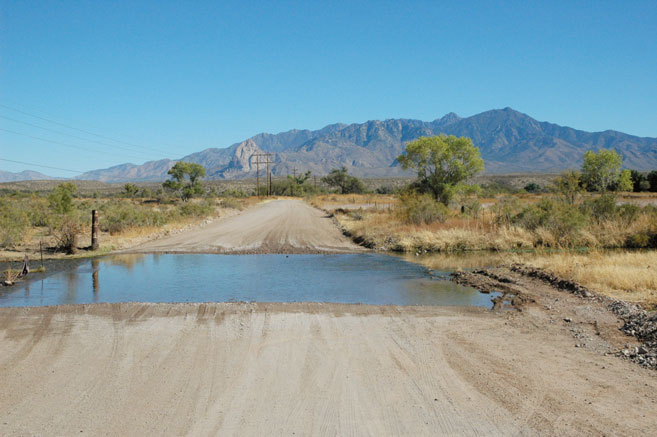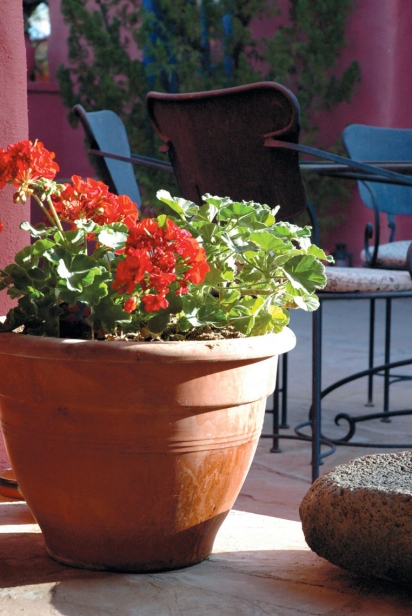Sabores Sin Fronteras: Food Traditions That Don’t Stop At The Border
Sabores Sin Fronteras/Flavors Without Borders
Last November I found myself driving a rental car on I-19 heading south from Tucson toward Nogales with a cranky GPS gadget telling me that the location I was headed for did not exist. The destination was Rex Ranch, a casual Southwestern resort where you leave your request for a reservation on the caretaker’s cell phone and wait for her to call you back. Once she does, she takes your name (not your credit card number) and tells you not to be concerned that you have to drive through the Santa Cruz River in order to get there—she does it everyday in a Subaru and, unless it’s monsoon season, there is nothing to worry about. I brought extra water and some snacks with me just in case.
Since the irritating voice on the navigation device didn’t seem to know her way any better than I did, I turned it off, followed my old-fashioned printed directions and took in the beautiful desert scenery. It had been snowing when I left Santa Fe earlier in the day and now I was happily soaking up an 80-degree afternoon. The Santa Cruz River Valley is often called “the palm of God’s hand,” and has been a sanctuary to those who have traveled there for centuries. It didn’t take long for the expansive calm of this landscape to take effect, and before I knew it I had made it through the river.
Arriving at Rex Ranch, I was greeted by Gary Nabhan, the ethnobotanist and author who had invited me here for a conference he and some colleagues were hosting on the food folkways of the U.S./Mexico borderlands from Texas to California, called Sabores Sin Fronteras (Flavors Without Borders). For three days, conference goers would be immersed in bilingual workshops, talks and activities—everything from the poetry of Rita Magdaleno, to mouthwatering histories of cactus fruits, mesquite and wild chiltepin peppers, to panel discussions with ranchers, to a keynote by renowned author Betty Fussell, who regaled us with stories from her new book, Raising Steaks, to a food festival field trip to Tubac.
Each of these events celebrated the heart and soul of what Sabores is intended to be: “A regional, bi-national and multicultural alliance that seeks to elucidate, document and celebrate the farming, ranching, foraging and culinary traditions shared by individuals and communities on both sides of the international boundary,” according to the University of Arizona’s website for the Southwest Center, which serves as the official home of Sabores.
Sabores is loosely modeled on the Southern Foodways Alliance (SFA), based in Oxford, Mississippi, which documents and celebrates the diverse food cultures of the American South by producing documentary films, hosting events and publishing compendiums of great writing. SFA “sets a common table where black and white, rich and poor—all who gather—may consider our history and our future in a spirit of reconciliation.” Sabores hopes to do the same for the foods of the Sonoran desert and borderlands.
What struck me most about this diverse group of writers, scholars, scientists, ranchers, historians and poets was how much we all had in common. Regardless of whether our first language was English or Spanish, whether we farmed the land or wrote about it, cooked or raised cattle, we shared something that truly went beyond borders: an abiding respect for the land, the people and the authentic culinary traditions of this harsh, yet bountiful, region we call home.
During one of his talks, Nabhan spoke of how so many people walk or drive across the desert seeing nothing but wide-open empty space. They don’t know how often they are standing on a barren patch of land with water not far beneath their feet. They don’t know that the dark green line on the distant horizon is a stand of pecan trees or that the gnarled bushes alongside the road are mesquite, an edible staple of the desert Southwest that was once more widely used to make flour. There is so much more to this land than is immediately noticeable. It is abundant and rich and enduring.
But does knowing this about our regional foodshed have any impact on our daily lives? Does any of it matter? I believe it does. If we learn to supplement our diets with native foods that don’t require thousands of gallons of irrigation to survive, it matters. If we learn to appreciate the subtleties of desert—the heat, the soil, the monsoons that fill our rivers—it matters. If we learn and remember the time-honored traditions of the ranchers and foragers those who blazed the road before us, it matters.
As we become more and more aware of the locally produced and indigenous foods available to us, there is hope for a more sustainable food future, even in the desert.
For more information on Food Without Borders/Sabores Sin Fronteras, see http://www.saboresfronteras.net.
Tracey Ryder is president and CEO of Edible Communities, a network of 51 regional food magazines across the U.S. and Canada.






